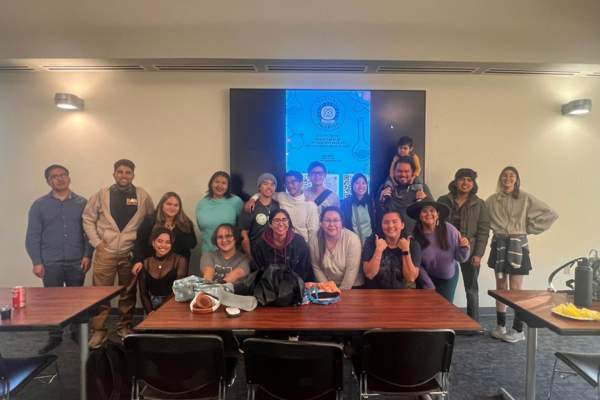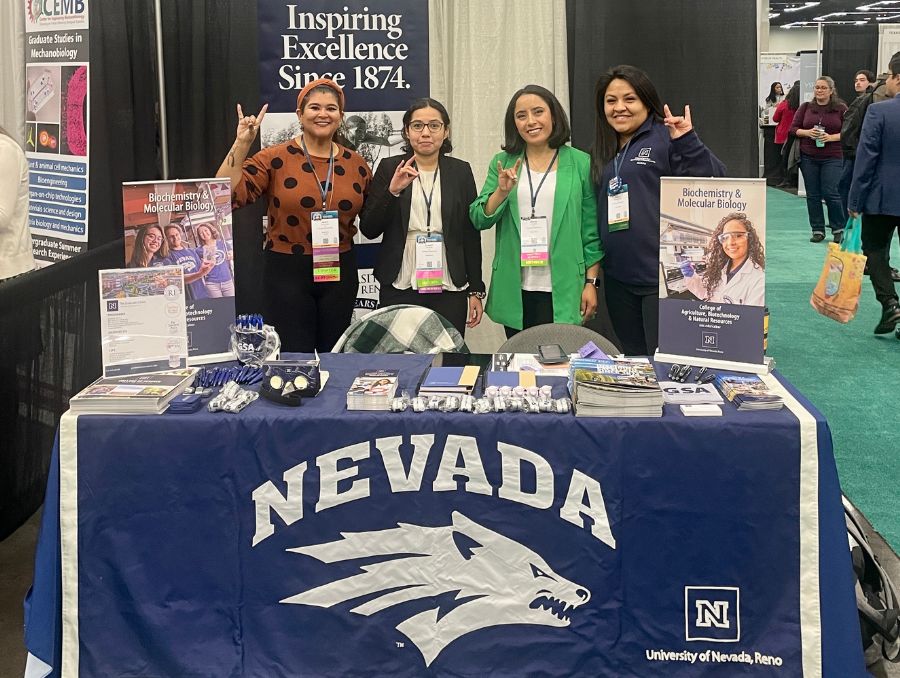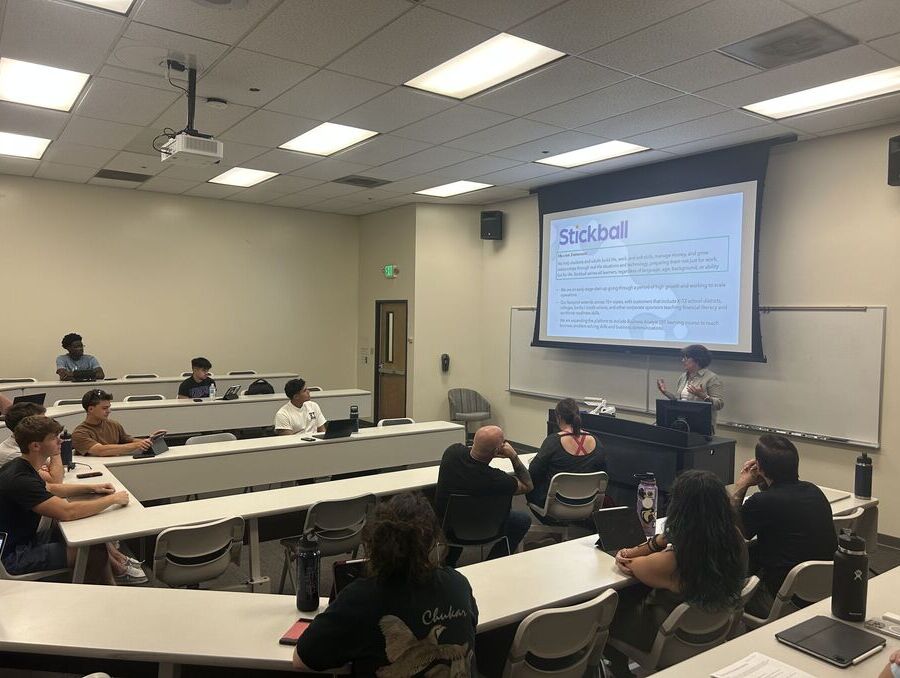Faculty and students from the University recently visited Portland, Oregon for the National Diversity in STEM Conference (NDiSTEM), hosted by the Society for the Advancement of Chicanos/Hispanics & Native Americans in Science (SACNAS). The students and faculty who attended are part of the provisional SACNAS chapter at the University of Nevada, Reno. Travel to the conference was supported by the College of Agriculture, Biotechnology & Natural Resources (CABNR), the College of Science, the Institute for Neuroscience and the Nevada Idea Network of Biomedical Research Excellence.
Ricky Klafehn, the graduate president of the chapter who is pursuing her master’s degree in anthropology from the College of Liberal Arts, has dealt with some imposter syndrome when it comes to her own Guaraní (Indigenous community in what is today Paraguay) identity, leading her to question whether she could claim Guaraní ancestry, and shared that with other people at the conference.
“I didn’t have to prove myself to anybody at this conference,” Klafehn said. “I really wanted to bring that community and that sense of pride and empowerment to the students at the University.”
According to SACNAS’s website, NDiSTEM is the largest multicultural and multidisciplinary STEM gathering in the country. At the conference, where SACNAS celebrated its 50th anniversary, there were attendees from across many generations.
“There were elders and founding members at this conference,” Klafehn said. “So that was really wonderful to see and hear from their perspective.”
A new (old) way to approach science
For Klafehn and Jennifer Hoy, an associate professor in biology in the College of Science, one of the main goals of starting a SACNAS chapter on campus is to talk about science in a way that reaches beyond the typical Western idea of the scientific community. Traditional Knowledge, curated after hundreds and thousands of years by Indigenous communities, is often discarded in favor of Western science.
As Western research about natural systems becomes more holistic, scientists are beginning to understand that oftentimes, Indigenous traditions, like regular burning in a forest, supports forest health and prevents extreme and uncontrollable wildfires. Western science has been slow to adopt some of the methodologies from Indigenous communities, and Indigenous scientists, especially younger scientists and students, are still often left out of discussions.
The conversation about inclusivity in science goes even deeper than that though, to the ways that people talk about their science. Klafehn said that one of the main themes of the conference, which brought 6,500 people, was advocating for students.
“These students are scientists, they're presenting their science, but they're doing it from their perspective and their framework, their cultural framework, which is actually useful,” Hoy said. “I’m worried that if my students write their grant in language that doesn’t sound like language usually used in a grant, it’ll be written off and the reviewers won’t find value in their ideas.”
SACNAS at the University
Last fall, Klafehn, who wanted to start a SACNAS chapter at the University, reached out to Kari Emm, tribal student specialist with CABNR, who put her in touch with Karla Hernández, now director of CABNR’s Biotechnology Program and former director of Hispanic/Latinx community relations at the University. The three began efforts to gauge interest in the program and slowly built up a larger community. The chapter was recently recognized as an official chapter of SACNAS.
Hernández added the SACNAS chapter at the University is the first and only recognized SACNAS chapter in Nevada. More than 30% of the state’s population identifies as Latinx, and 21 federally recognized tribes are located in Nevada.
“I think it is imperative to note the importance of this accomplishment,” Hernández said.

Klafehn said that one thing that has helped the chapter thrive so far is how widespread the membership is across campus. While Klafehn is studying anthropology, the undergraduate president of the chapter, Paola Miramontes Gonzalez, is majoring in environmental science and biology. There are three faculty advisors – Emm, Hernández and James Kenyon from the Institute for Neuroscience. Not only is there breadth in the academic backgrounds of the membership and mentors, but Klafehn said each of the members is very involved in the chapter and supporting events and fundraising efforts. Klafehn said SACNAS at the University currently has about 25 people who regularly show up to meetings.
The SACNAS chapter on campus welcomes all students and faculty who want to contribute to advancing diversity in science, no matter somebody’s background. Anybody interested in learning more about SACNAS at the University can message SACNAS on Instagram (@sacnas_unr). Some of the upcoming events SACNAS is planning are listed below.
- Fall festival and celebration of local chapter establishment (November 28)
- Holiday celebration (December)
- Spring events include a spring social, a 5K walk and roundtable discussion about the agricultural movement in memory of Cesar Chavez, a Cinco de Mayo celebration and conversation to clarify what the date is commemorating, a Day of Service event, a spring commencement celebration, and a monthly talk series called Café con Science in which students practice presenting their research projects.
- There are also plans to add professional development workshops to the event calendar as well.















